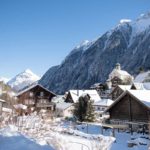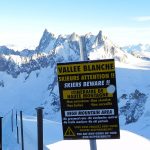Ever been minding your own business on the slopes and suddenly felt your jaw drop as someone speeds past you, throw themselves into the air, turns effortlessly mid-flight and then nails the landing?
Or perhaps you’ve watched some freestyle skiing at the Olympics?
Wherever you’ve seen it before, there is no denying freestyle skiing is an epic sport to watch.
Combining the athleticism of skiing with the elegance and skill of acrobatics, its both beautiful and wild.
Freestyle skiing takes a lot of practice and dedication to master and although it may look easy, it almost never is.
Freestyle Vs. Freeride
The difference between freestyle and freeride skiing is mainly the terrain.
Freestyle skiers use man-made parks with jumps, rails and pipes created specifically to perform tricks.
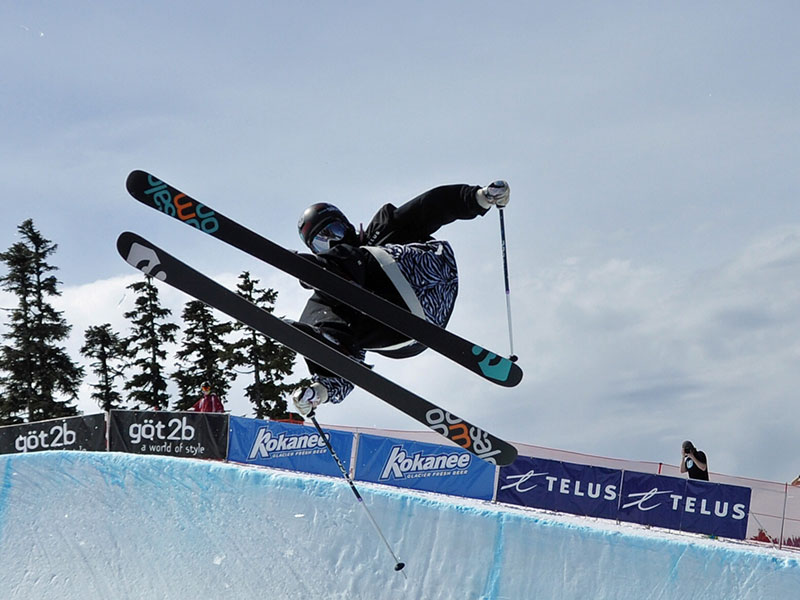
Freestyle skiing
Freeride skiers basically perform the same tricks but using natural features found on the mountain side.
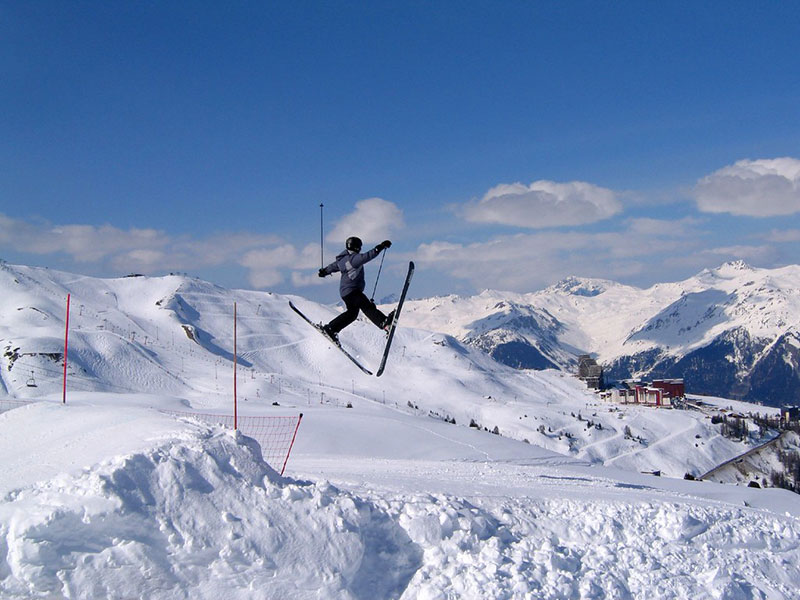
Freeride skiing
Generally, the best freeride areas are off-piste and require helicopter access.
A Brief History
Freestyle jumps began in Norway in the 1800’s but didn’t become popular with most people until the 1960’s.
But even then, it was only considered a fun hobby rather than a sport.
It was officially recognised as a sport in 1979 and became an Olympic sport at the 1988 Calgary Winter Olympics.
However, it was only a demonstration sport and didn’t become a medal sport until years later.
Get the gear
Freestyle skiing requires slightly different skis to downhill events.
The skis tend to be slightly lighter than normal skis making those jumps easier.
The other key difference is that freestyle skis turn up at the front and the back. Normal skis only turn up at the front.
Commonly known as “twin tips” the turn up at the back allows freestylers to ski backwards with ease.
Having the right skis is essential, having the right boots isn’t, but definitely helps.
Freestyle boots are a little bit shorter at the front of your shins and more flexible around the ankle. This gives you more freedom of movement to bend and jump.
Freestyling
Freestyling encompasses many different events.
There is the traditional ski jump seen at the winter Olympics in which competitors use a constructed slope to jump as far as they can.
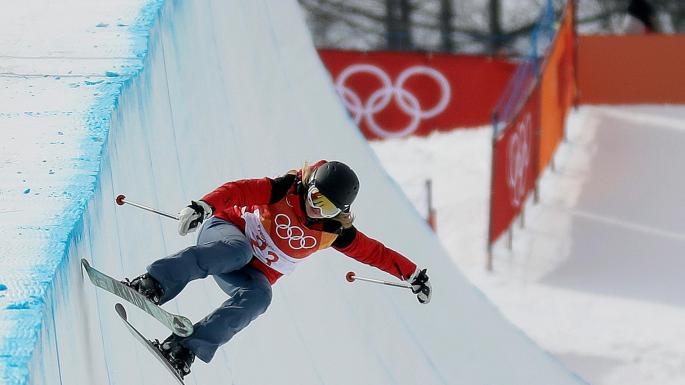
Freestyle is an Olympic sport
Each skier has two attempts on the 4-meter long jump which will propel them 6 meters into the air.
In the air a skier will flip, twist and turn before landing.
However, the more popular and more creative freestyle skiing can be seen in the halfpipe event and the slopestyle.
Both events see riders marked on creativity, complexity and technique.
Skiers are free to execute jumps, turns and tricks down a halfpipe or, in slopestyle, on a course of jumps and rails.
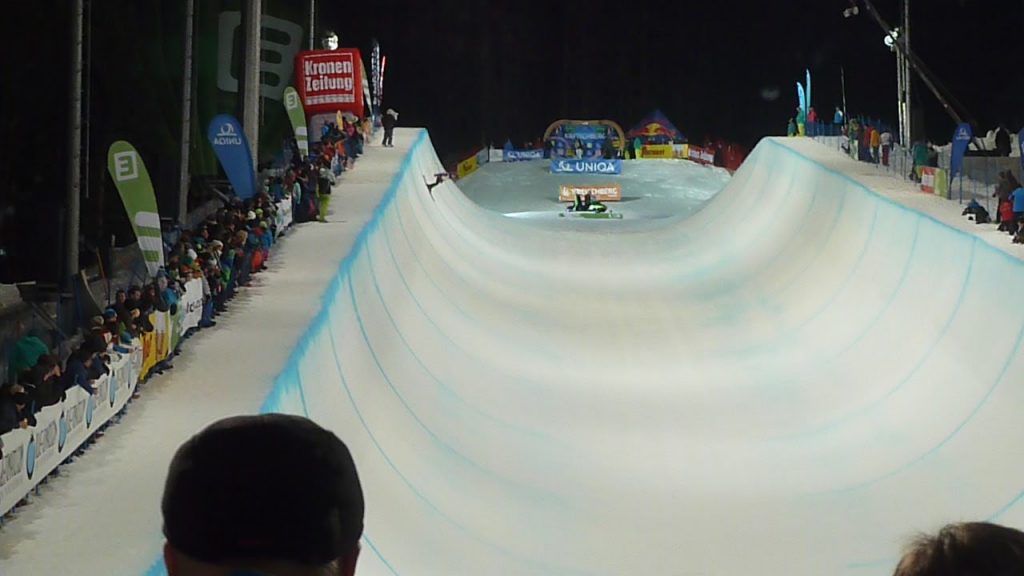
Ski half-pipe
Slopestyle racing sees rider face a downhill course of jumps, rails, boxes, bars and moguls in which they can choose their moves.
The event is more varied than the aerial ski jumps and the halfpipe and allows for more creativity in one run.
The other common freestyle event is the halfpipe. Which is exactly that; half a pipe. It has steep sides to give you enough speed to catch some air and pull some shapes.
Skiers go from side to side trying to score points for nailing difficult moves and gaining height in their jumps.
The more jumps you can fit in the pipe, the most chance at getting points.
Freestyle moves are always evolving and adapting.
The most popular moves involve grabbing the skis in mid-air, rotating 180 or 360 degrees, flipping upside-down and spinning.
Getting started
If you’ve never done freestyle skiing before than its wise to take it slowly.
The pros may make it look easy but it really isn’t.
Most big resorts with freestyle parks will have a huge airbag jump.
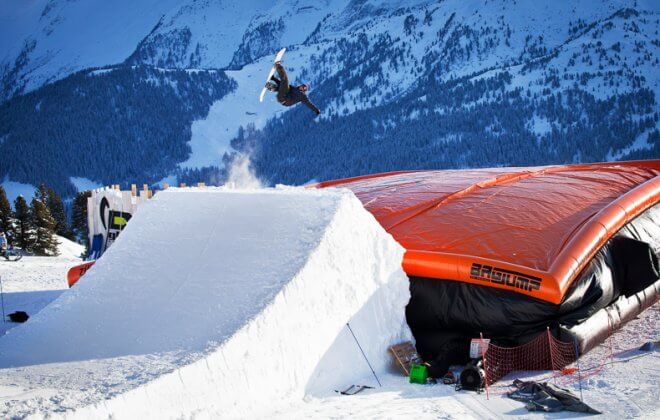
Test your ability on an airbag jump
This is a standard jump with a huge airbag in the landing area so no matter how you land, it will be safe.
These bags are great for getting used to being high in the air and learning how to balance your leg, skis, arms and body.
If you think you’re ready to try with a proper landing then start small.
Most beginner parks will have small jumps and rails in which you will only get less than a meter in the air. Again, this is great to practising without worrying about getting seriously hurt.
It’s also a good idea to get a lesson.
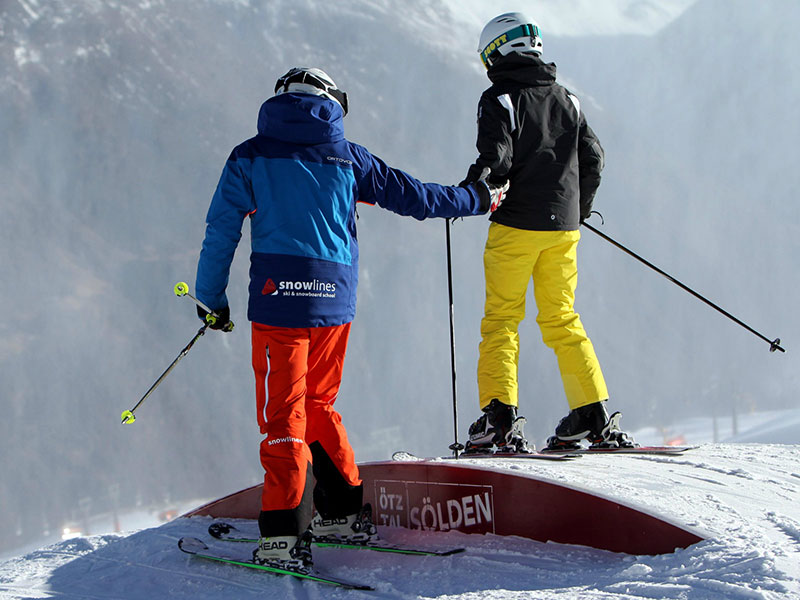
A freeride lesson in Solden, Austria
A lot of places offer both group and private lessons in snow parks where you can learn some tips and nail the proper technique.
Getting a good basic grounding will help you in the long run if you want to move on to bigger moves.
If you’re confident with little jumps and know that you can land most small moves then going to an indoor training centre is a good idea.
These centres have diving boards, foam pits, trampolines and soft areas to help you nail big moves with lots of height.
If you want to keep practising over summer so that next season you can impress your mates than head to a water park.
Many water parks in the mountains are full of freestyle skiers practising their balance in their air.
Some even allow you to wear skis to practise but definitely check with the park first!
Places to go
Avoriaz, France
Avoriaz was the first resort in France to build a resort park and it has continued to pioneer freestyle skiing. It now has five parks and a superpipe.
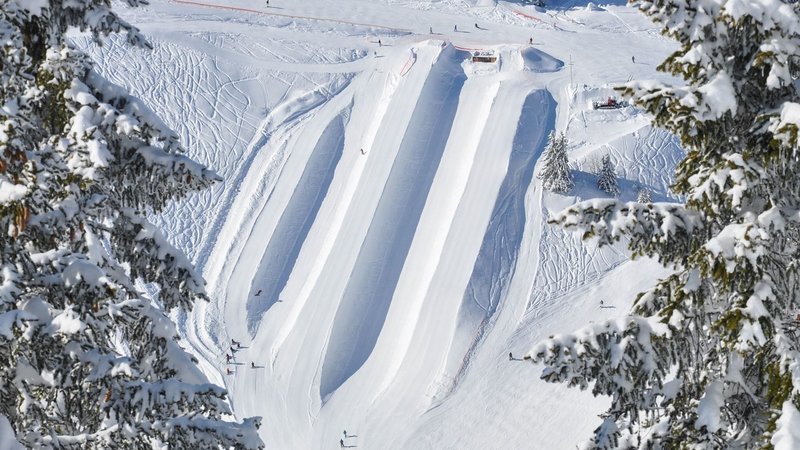
Avoriaz
The parks cover such a wide range of abilities that if you’re a freestlye pro, you won’t get board and if its your first time, there are plenty of smaller jumps and rails to learn on.
Whistler, Canada
Whistler is a freestyle skiers paradise. It has 99 acres of freestyle terrain including five parks and an Olympic halfpipe.
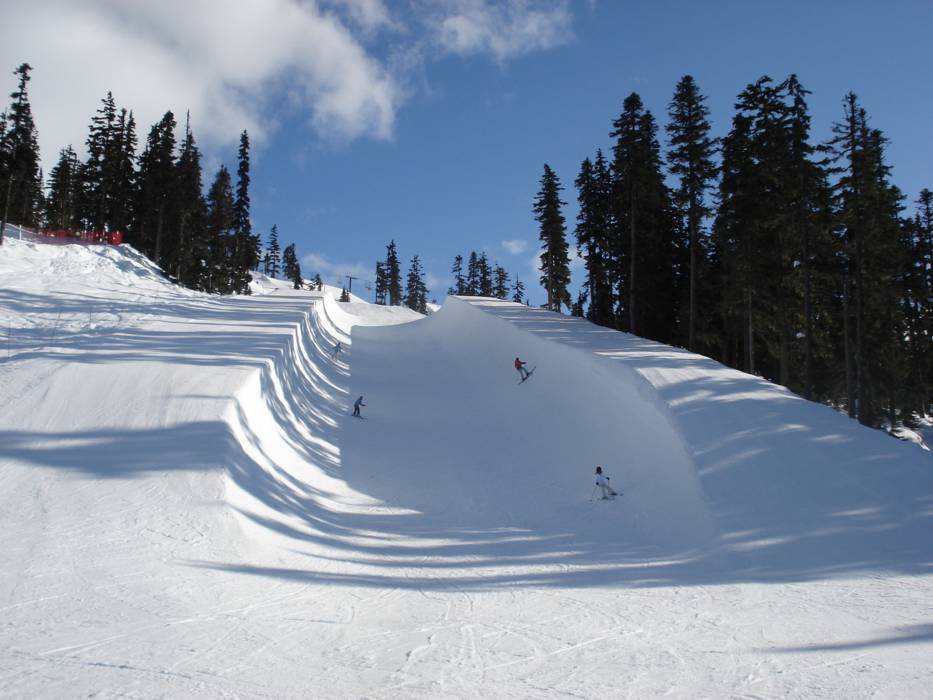
Whistler
It caters to everyone and the back-country freestyle is out of this world.
Cervina, Italy
if you want some Italian freestyle the only real place to go is Cervina.
It has a super-fast chairlift which is dedicated to serving the park and a huge sound system to help you feel the freestyle vibe.
The park is 400m long and is perfect for learning the ropes.
Hemsedal, Norway
The park here is the most photographed park in the world.
Not only is the season here super long but the awesome parks here are the best in Scandanavia.
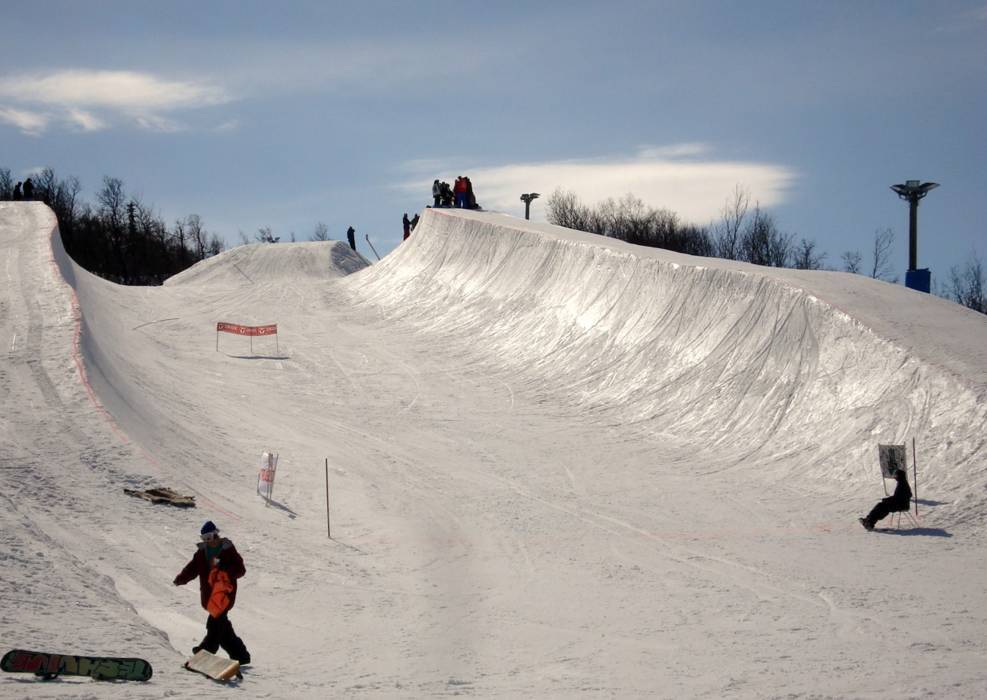
Hemsedal
There are five parks with so many features, the Nike pro team is regularly seen training here. If you want to learn from the best of the best, head to Hemsedal.
Laax, Switzerland
Potentially the best parks in Europe are found in Laas.
The parks here are so comprehensive and offer so much variety that the Burton European Open, the Brits and the European Freeski Open are held here.
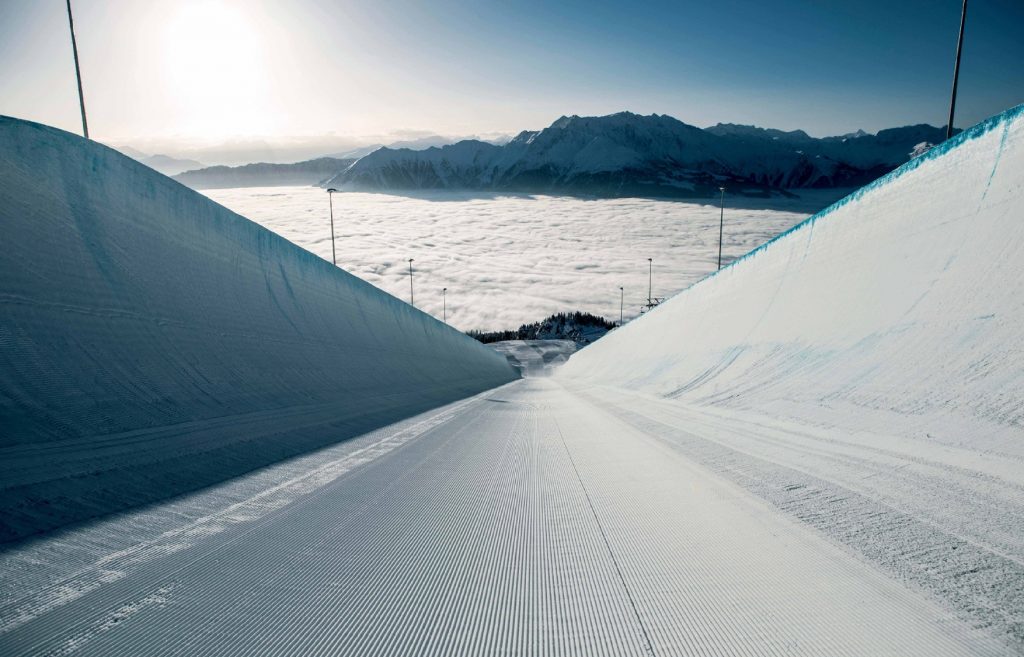
The longest halfpipe in Europe – Laax, Switzerland
There is an indoor training academy with soft pits to help you nail the technique before trying it on the slopes.
Laax is especially known for having the longest halfpipe in Europe.




